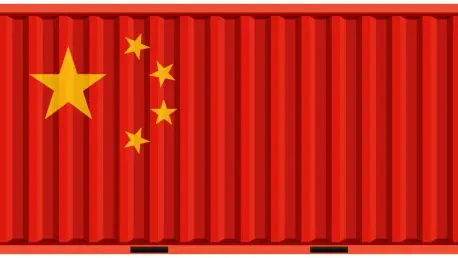Historical Foundations of China’s Economic Self-Reliance
China’s pursuit of economic independence stands as a defining feature of its modern policy landscape, reflecting a deliberate shift that has reshaped its role in global markets over the past decade. This strategy has gained momentum, evolving from a protective measure into a cornerstone of national identity. Under the leadership of Hu Jintao, initial steps were taken to reduce reliance on foreign goods, but since Xi Jinping assumed power in 2012, these efforts have intensified with a clear focus on self-sufficiency across critical sectors. This transformation has not only altered China’s internal economic framework but also positioned it as a formidable player on the world stage.
The significance of this approach cannot be overstated, especially when viewed through the lens of global trade and U.S.-China relations. Economic self-reliance has become a shield against external pressures, allowing China to navigate trade disputes with greater confidence. By prioritizing domestic capabilities over foreign dependencies, the nation has sought to insulate itself from vulnerabilities that could arise from geopolitical tensions, particularly with Western powers. This policy reflects a long-term vision, one that has been consistently reinforced over nearly two decades as a fundamental aspect of economic planning.
Understanding this historical context reveals how deeply embedded self-reliance is in China’s strategic outlook. It serves as both a response to past economic challenges and a proactive stance against future uncertainties. As global trade dynamics continue to evolve, this focus on independence has emerged as a critical factor in shaping China’s interactions with other nations, setting the stage for a redefinition of international economic norms.
Key Strategies for Reducing Western Dependence
Domestic Production and Import Substitution
A primary driver of China’s quest for economic autonomy lies in its commitment to replacing imported manufactured goods with homegrown alternatives. This policy of import substitution has been aggressively pursued through state-led initiatives that channel resources into local industries. By fostering domestic production, even in areas where costs are high or efficiency is low, China has aimed to build a robust internal market capable of sustaining itself without heavy reliance on Western imports.
Government policies have played a pivotal role in this transformation, often prioritizing national interests over short-term economic gains. Subsidies, tax incentives, and regulatory support have been deployed to bolster sectors ranging from consumer goods to heavy machinery. While these measures have sometimes led to overcapacity or suboptimal resource allocation, they have undeniably strengthened China’s ability to meet its own needs, reducing the influence of foreign supply chains in critical areas.
This strategic focus on domestic production also serves as a buffer against external shocks, such as trade disruptions or sanctions. By cultivating self-sufficient industries, China has created a foundation that allows it to weather global uncertainties with greater resilience. Though not without challenges, this approach underscores a determination to prioritize long-term stability over immediate profitability, reshaping the contours of its economic landscape.
Technological and Scientific Advancements
Parallel to its emphasis on domestic production, China has placed significant weight on achieving self-sufficiency in science and technology. This ambition has been repeatedly highlighted in recent Communist Party meetings, where leaders have stressed the need to drive innovation from within. The latest five-year plans outline clear targets for advancing research and development, aiming to position China as a global leader in cutting-edge fields.
Investments in technology have yielded notable progress, reducing the dependence on Western intellectual property and innovation. From semiconductors to artificial intelligence, state-backed programs have accelerated the growth of indigenous capabilities, often through partnerships between government entities and private enterprises. This shift not only enhances national security by safeguarding critical technologies but also diminishes the leverage that foreign tech giants once held over China’s economy.
The push for scientific advancement is also a statement of intent, signaling China’s aspiration to redefine its role in the global knowledge economy. By fostering homegrown solutions, the nation is gradually closing gaps that once necessitated collaboration with Western counterparts. This evolving landscape of innovation continues to alter the balance of technological power, with implications that extend far beyond economic metrics.
Challenges and Inefficiencies in Pursuing Independence
China’s journey toward economic self-reliance, while ambitious, is not without significant hurdles. One of the most prominent challenges is the high cost associated with building domestic industries from the ground up. Replacing imported goods often requires substantial investment in infrastructure, skills, and technology, leading to inefficiencies that can strain national resources and impact short-term economic performance.
Beyond financial burdens, this strategy has also placed stress on international trade relationships. By prioritizing self-sufficiency, China risks alienating key partners who rely on mutual economic interdependence. The potential for isolation from global markets looms as a long-term concern, particularly if policies continue to favor internal growth over open trade. Such a trajectory could limit access to diverse resources and hinder collaborative innovation.
To mitigate these risks, efforts are underway to balance independence with selective engagement in global systems. Strategic trade agreements and participation in multilateral forums are being leveraged to maintain essential connections while still advancing domestic goals. However, navigating this dual approach remains complex, as the pursuit of autonomy must contend with the realities of an interconnected world economy, posing ongoing questions about sustainability and adaptability.
Impact on Global Trade Dynamics and U.S. Leverage
China’s proactive steps toward economic independence have fundamentally altered the dynamics of global trade, shifting the balance of power in significant ways. By reducing reliance on Western markets and goods, the nation has diminished the effectiveness of traditional economic tools, such as tariffs and sanctions, often wielded by the United States. This strategic positioning has weakened Western leverage in trade disputes, creating a more asymmetrical relationship.
Moreover, China has developed mechanisms to exert its own economic pressure on the U.S., insulating itself from retaliatory measures. Through control over critical supply chains and access to essential resources, Beijing can influence American markets while safeguarding its own economy. This capacity to push back reflects a calculated effort to redefine engagement terms, prioritizing national interests over mutual dependencies that once characterized bilateral trade.
The ripple effects of these changes are evident in the broader international arena, where trade norms are being reshaped by China’s actions. Smaller economies and emerging markets are increasingly drawn into China’s orbit, further diluting the influence of Western economic policies. As this trend continues, the global trade landscape faces a period of uncertainty, with traditional power structures giving way to new alignments driven by China’s self-reliant posture.
Future Implications of China’s Economic Strategy
Looking ahead, the trajectory of China’s self-reliance policy appears poised to evolve in response to a range of factors, including geopolitical tensions and technological breakthroughs. From 2025 to 2027, forecasts suggest continued investment in domestic capabilities, particularly in high-tech sectors, as a means to solidify economic autonomy. However, the pace and success of these efforts will likely depend on the broader global economic environment and the ability to adapt to unforeseen challenges.
This strategy’s impact on U.S.-China relations is expected to remain a central theme, with potential for both conflict and cooperation. As China strengthens its economic shield, American policies may need to pivot toward more nuanced approaches, focusing on areas of mutual benefit rather than confrontation. The reshaping of international trade norms could also accelerate, with China’s model of self-sufficiency influencing other nations to adopt similar protective measures.
Emerging challenges include the risk of technological fragmentation and the strain of maintaining growth amid global isolation risks. Yet, opportunities exist in fostering innovation-driven partnerships that align with China’s goals while addressing shared global issues. The coming years will test the resilience of this economic strategy, offering insights into whether self-reliance can coexist with the demands of an interconnected world.
Conclusion: Redefining Economic Relations With the West
Reflecting on China’s persistent drive for economic independence, it becomes clear that over the past two decades, this approach has fundamentally altered its interactions with the West, especially the United States. The focus on domestic production and technological prowess has built a formidable barrier against external economic pressures, while simultaneously enhancing Beijing’s ability to influence global trade disputes. This shift marks a turning point in how power is distributed within international markets.
Moving forward, actionable steps could involve fostering dialogue to address mutual economic concerns, potentially easing tensions through targeted agreements on technology sharing or trade balances. Both sides might consider establishing frameworks that encourage collaboration in non-strategic sectors, reducing the risk of further economic divergence. Exploring these avenues could help mitigate the complexities introduced by China’s self-reliant stance.
Ultimately, the evolving dynamic necessitates a reevaluation of engagement strategies, with an emphasis on adaptability to changing trade realities. Stakeholders across the spectrum are encouraged to monitor these developments closely, seeking innovative solutions to balance national interests with global cooperation. This path, though challenging, offers a way to transform potential conflicts into opportunities for redefined economic partnerships.









